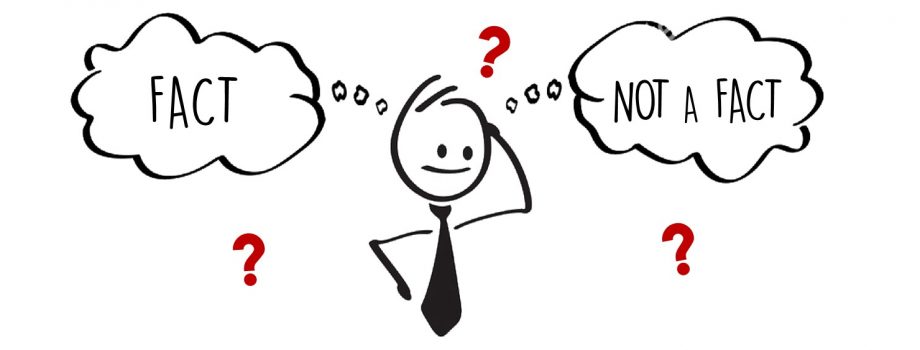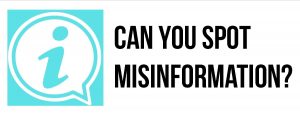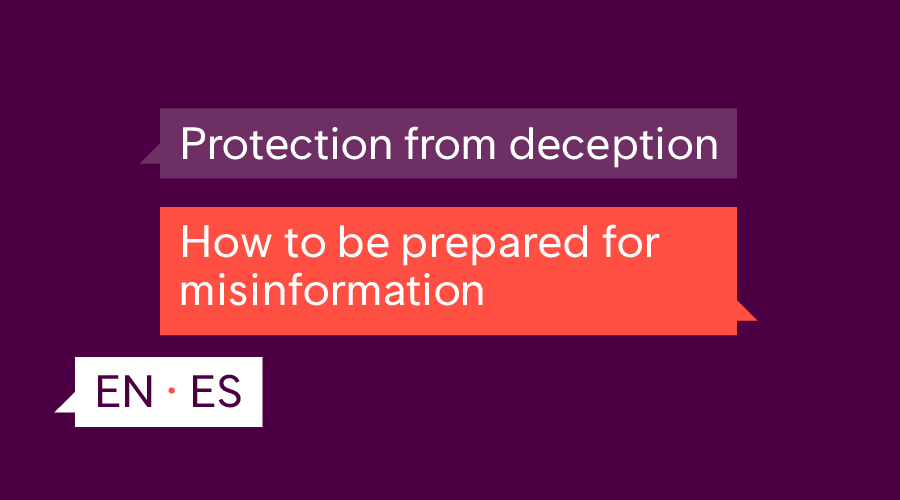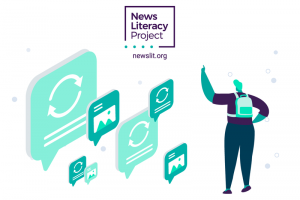In the age of information, why is it so hard to be a well-informed citizen? Discover tools to help navigate the media landscape.
mis·in·for·ma·tion
: false information that is shared by people who don’t realize it is false and don’t mean any harm.
dis·in·for·ma·tion
: false information deliberately that is created and shared to deliberately cause harm.
(definitions source: PEN America)
How to Spot Disinformation
- Look for unusual URLs or site names, including those that end with “.co” or “.cm” — these are often appear to be legitimate news sites, but they aren’t.
- Look for signs of low quality, such as words in all caps, headlines with glaring grammatical errors, bold claims with no sources, and sensationalist images and clickbait. These are clues that you should be skeptical of the source.
- Check a site’s “About Us” section. Find out who supports the site or who is associated with it. If this information doesn’t exist — and if the site requires that you register before you can learn anything about its backers — you have to wonder why they aren’t being transparent.
- To see if an image is real or not do a reverse image search using Google Image Search.
- Consider whether other credible, mainstream news outlets are reporting the same news. If they’re not, it doesn’t mean it’s not true, but it does mean you should dig deeper.
- Check your emotions. Clickbait and fake news strive for extreme reactions. If the news you’re reading makes you really angry or super smug, it could be a sign that you’re being manipulated. Check multiple sources before trusting.
Brush up on your Media Literacy Skills with a webinar from PEN America
Misinformation y las noticias
Watch these videos from Center for an Informed Public, University of Washington, and PBS to learn more about Deepfake and how deepfakes influence what we see and believe on social media.
Prepare your children for tomorrow’s news with these tools
common sense education News and Media Literacy Resource Center
PBS News and Media Literacy Collection
We all have biases. It’s natural for our brains to function in this way. This article from Psychology Today discusses three ways negative news engages cognitive biases, trapping us in negativity.
Negativity Bias
Negativity bias refers to the fact that humans focus on negative events, information, or emotions more than their positive counterparts. In more dangerous times, this bias may have provided an evolutionary benefit
Availability Bias
Availability bias (also called the availability heuristic) is the tendency for people to overestimate the importance of the examples that immediately come to mind when considering a topic.
Confirmation Bias
Confirmation bias is the idea that we will actively seek out, remember, and favor information that confirms something we already believe.
Learn how to protect yourself and your community from misinformation with this free two-week TEXT message course.
The course will give you the knowledge and understanding you need to protect yourself and your community from online misinformation. You’ll learn why people create and share false and misleading content, commonly used tactics for spreading it, what you can do to outsmart it, and how to talk to family and friends about it.
It’s designed to be quick and easy enough to appeal to everyone. Every day, at a time of your choosing, you will receive a little nugget of learning by text message, with some extra video and article links if you want to dive deeper.
- English version -> bit.ly/protection-from-deception
- Spanish version -> bit.ly/que-no-te-cuenten
News Lit Quiz: Should you share it?
Verify Your News Stories
- FactCheck.org
- PolitiFact
- First Draft News
- Google Reverse Image Search
A tool for verifying the origins of a photo.
Click on the camera icon in the search box to paste the image URL or upload the photo. - Snopes
Fact-check internet rumors, myths, and stories.





